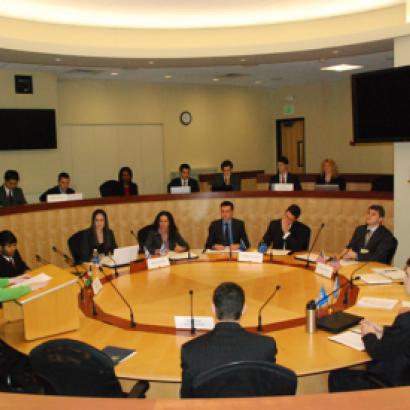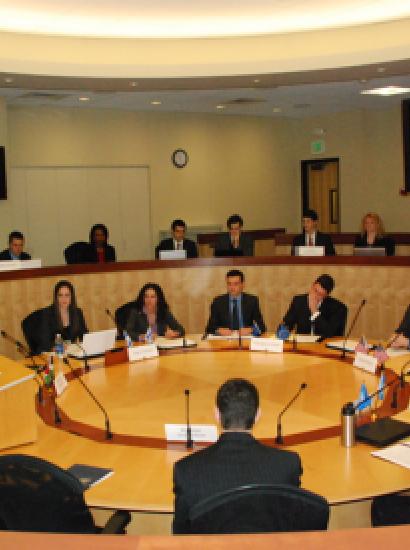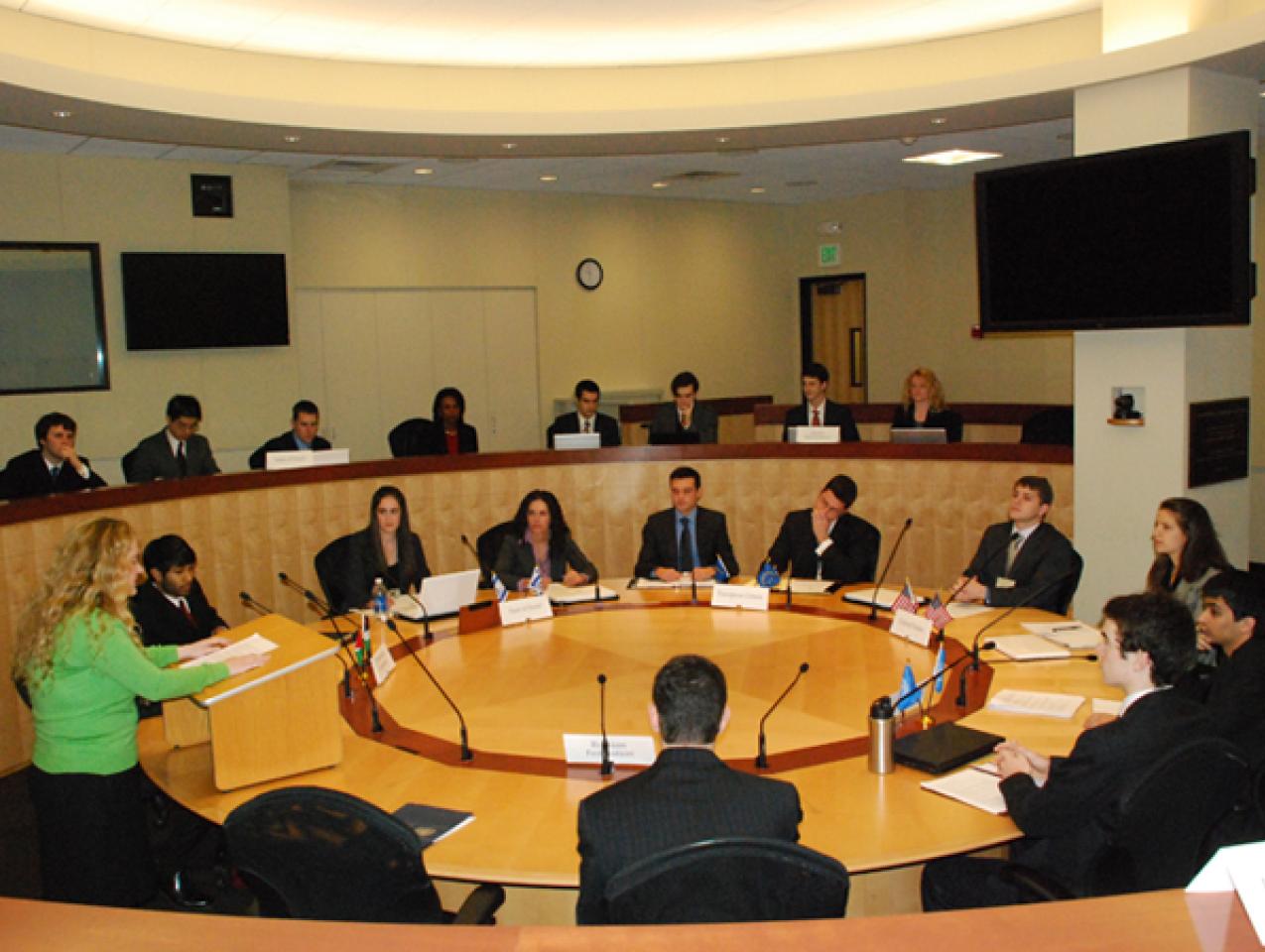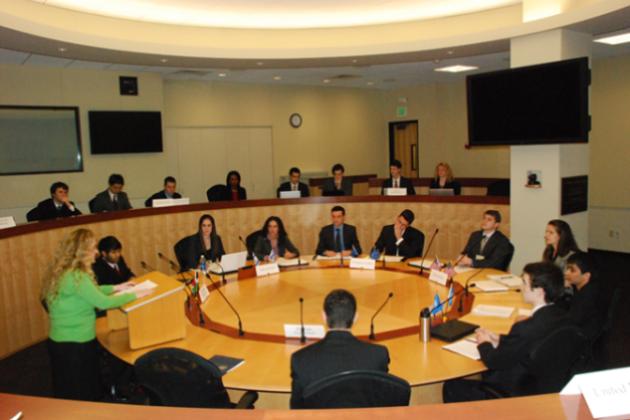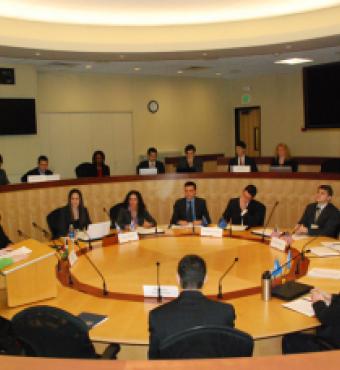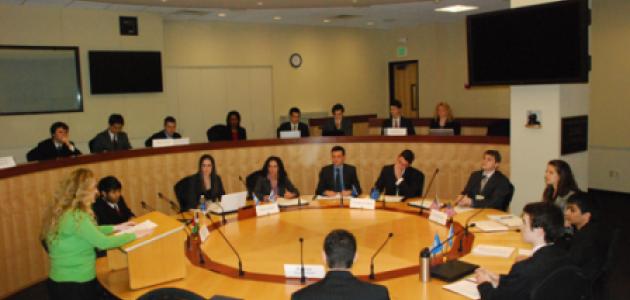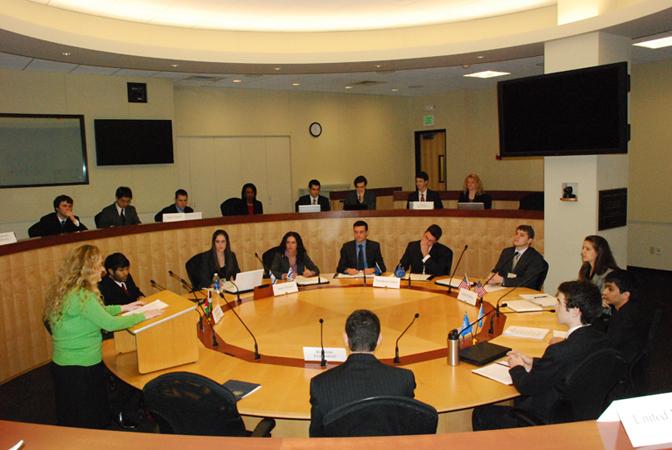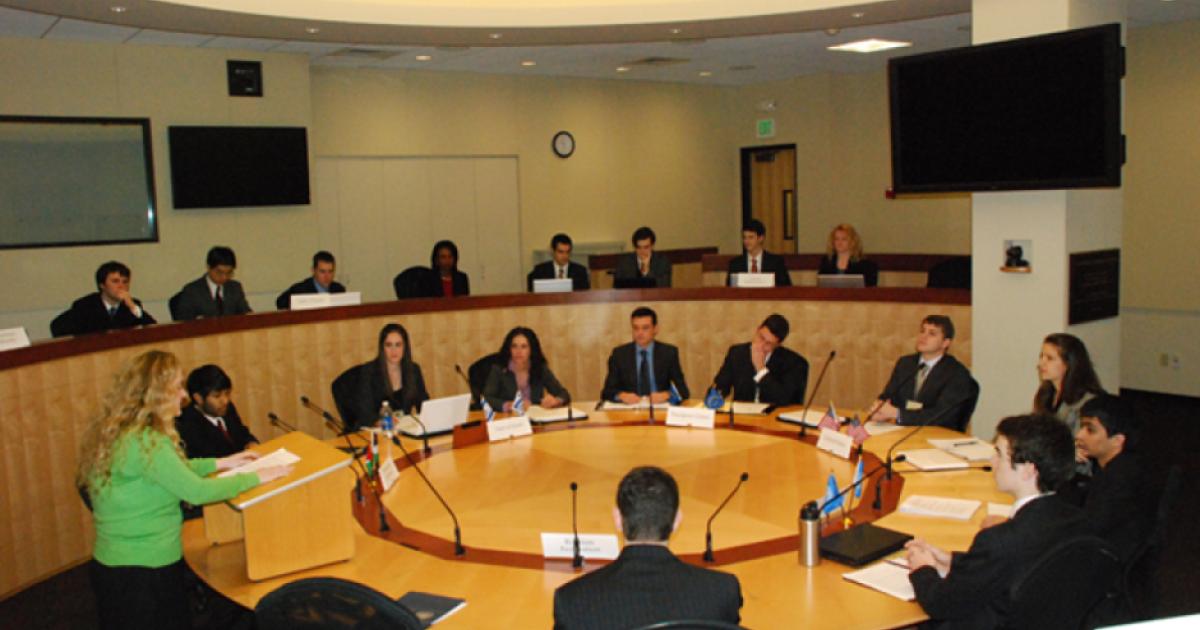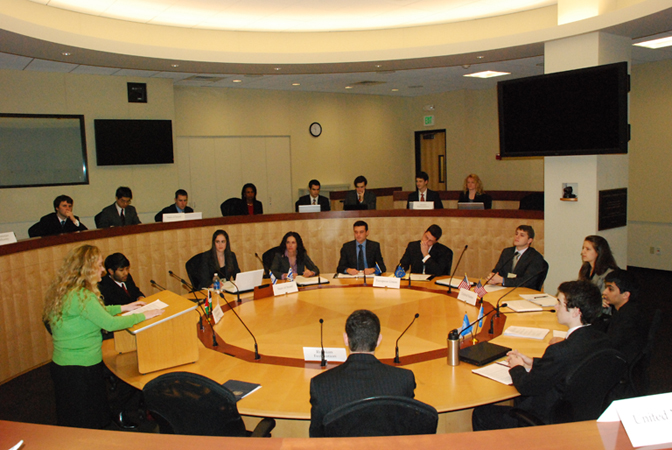
Russian foreign minister Sergey Lavrov announced last week that the Middle East Quartet–an international coalition composed of the United States, the United Nations, the European Union, and the Russian Federation–would meet March 19 to discuss the Middle East peace process.
A group of Stanford students, however, has already been there, done that, thanks to Stanford political science professor and former secretary of state Condoleezza Rice.
More than 25 Stanford undergraduate and graduate students assumed the roles of international diplomats and successfully negotiated a framework agreement for Middle East peace during a simulated Quartet meeting organized by Professor Rice, who is also the Thomas and Barbara Stephenson Senior Fellow at Stanford’s Hoover Institution.
The two-day simulation, which placed the students in the shoes of negotiators and exposed them to the difficulties of navigating one of the most contentious issues in international affairs, was the culmination of a quarter-long exploration of challenges and dilemmas in American foreign policy in a small seminar taught by Professor Rice during her first year back at Stanford University.
“I have used simulations in my past courses and have always found them to be valuable teaching tools,” Professor Rice said. “By forcing students to confront complex issues from a policy maker’s perspective, simulations expose them to the trade-offs involved in decision making and the tough choices that need to be made in diplomacy.”
During the simulation, students were assigned to one of six negotiating teams–the four members of the Middle East Quartet as well as Israeli and Palestinian delegations– where, as presidents, prime ministers, foreign ministers, and other officials, they drafted agreements, made formal presentations, and participated in press conferences with professional journalists.
Over the course of two days, the students met in four plenary sessions and smaller negotiation groups to tackle the final status issues that are at the center of the Middle East peace process, including the status of Jerusalem, borders, security, water rights, and refugee issues.
Students were also forced to grapple with a number of mock crises and breaking news items that emerged over the course of the simulation in real time, including a suicide bomb attack in Gaza and a possible no-confidence vote in the Israeli prime minister, that threatened to derail their negotiations.
“These mock crises showed students that issues like Middle East peace cannot be addressed in isolation,” Professor Rice said. “Rarely in foreign affairs can diplomats work on one problem without recognizing its implications for other issues in the region or the political environment at home.”
The simulation made use of the newly renovated conference rooms in the Lou Henry Hoover Building. This setting, particularly the Annenberg Conference Room, provided students with a realistic environment in which to conduct their negotiations.
Many students described the two-day simulation and Professor Rice’s seminar as one of the highlights of their time at Stanford.







